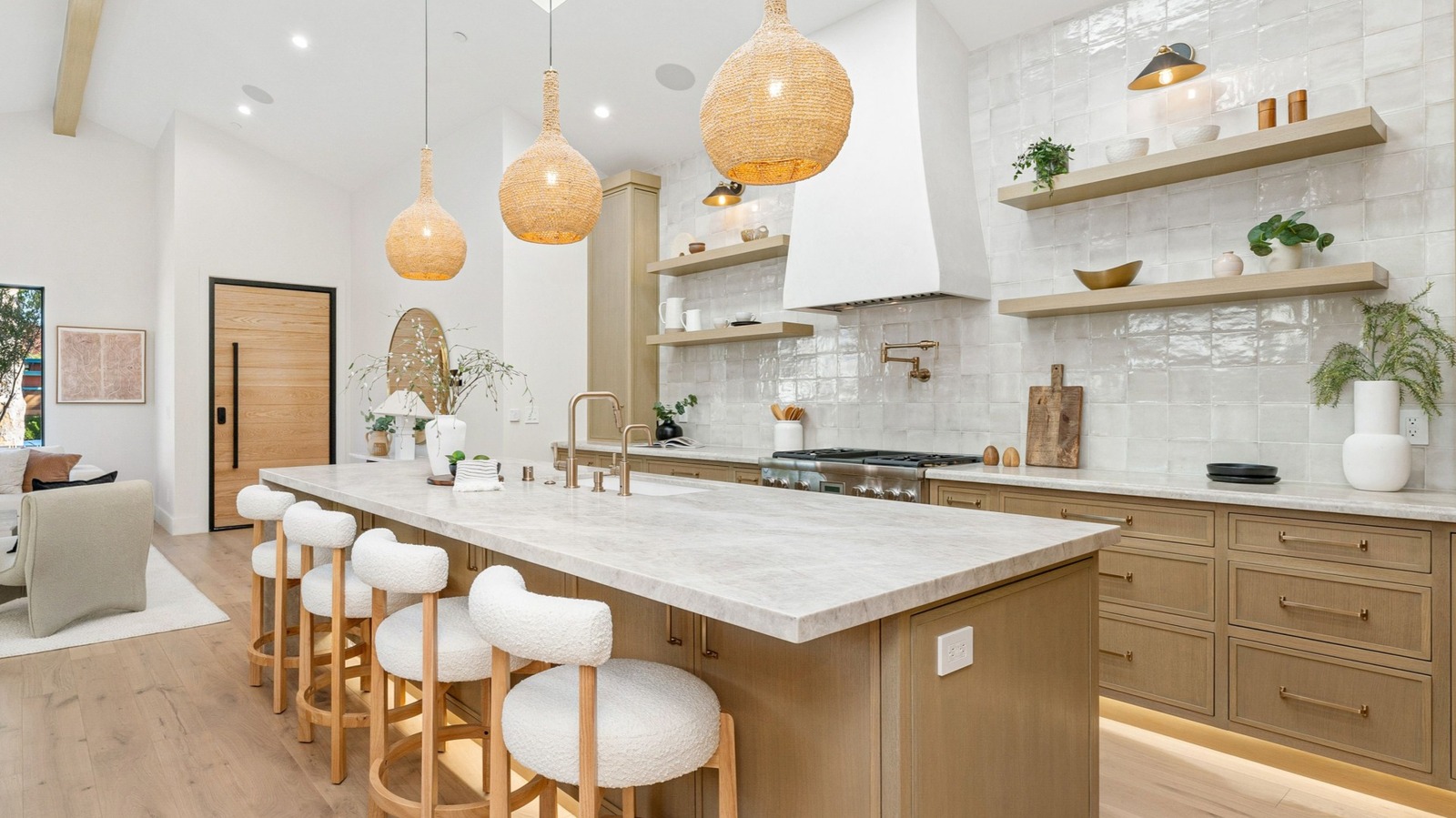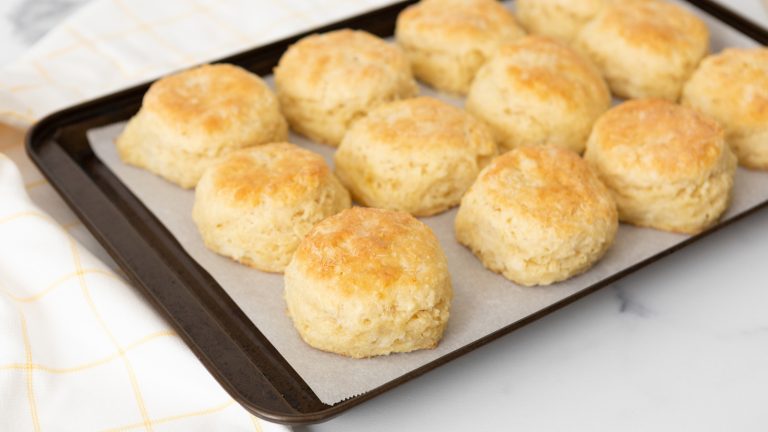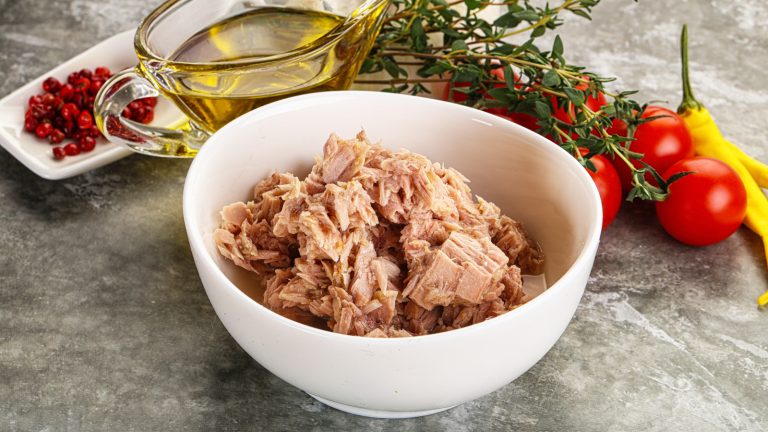We may receive a commission on purchases made from links.
Anyone who’s considered designing or re-designing a kitchen knows the potential stress involved and the mistakes you can make. What if you don’t choose wisely and are stuck with a potentially expensive makeover that you actually don’t love? Whether it’s dysfunctional or just not aesthetically what you imagined, the results can be disappointing, to say the least. But there’s an even more crucial thing to consider when embarking on a new kitchen journey: longevity. Trends change at least every couple of years, bringing the potential of an outdated kitchen down the line.
Fortunately, there are some very specific things you can do to avoid that scenario. For some insight on how to design a new kitchen that stands the test of time, we reached out to Steven Fernandez, interior design expert and creative director at Residence Supply. Before sharing lots of helpful tips, functional considerations, and interior-decor information, he first summarizes the focal core of any successful kitchen project: “simplicity, balance, and adaptability.”
“To kick things off, you should start with a classic layout,” says Fernandez, suggesting, for example, a work triangle or creating zoned cooking areas. “I’d stay away from features that are overly trendy, as they may age quickly and look outdated over time. You should choose cabinetry and fixtures with clean lines and timeless profiles, such as shaker or slab-front cabinets.” Incorporating a foundational neutral palette allows you to refresh the space over time with simple changes, he explains, like changing accessories or minor updates such as new bar stools measured for a perfect fit and lighting.
Lighting and colors set the kitchen tone
Kitchen lighting can influence its atmosphere, mood, and functionality. Getting it right is especially essential to any kitchen, notes Fernandez. “If you layer ambient, task, and accent lighting, then it will enhance usability and keep your space feeling elevated.” Many professionals agree with the importance of these three primary types of kitchen lighting, and how they ultimately work together in subtle yet significant ways. Ambient light is considered the overall general light; accent lighting sets creative tones while bringing interest and dimension; and task lighting simply brightens or highlights specific areas to allow better performance of important culinary chores.
Color is one of the most recognizable features of a kitchen, and it often come down to personal preference. As a general rule, Fernandez recommends neutral colors such as soft whites, warm beiges, light grays, and earthy tones. “If you’re looking to create a timeless kitchen, then these are the most reliable color choices in my opinion,” he says. “This is because they create a calm and cohesive setting that won’t feel outdated as new trends come and go.” A white kitchen, for example, is a flexible choice that reflects light well and fits most styles, according to Fernandez, while warmer naturals offer a feeling of softness and depth that works with open-space plans. For a bit of contrast, consider deep forest green or navy blue touches, but avoid saturated primary or ultra-bold hues as they can quickly feel outdated or overwhelming.
Materials and textures matter more than you think
When it comes to materials for the longevity of kitchen design, strong, well-made components mean everything. Fernandez stresses that quality really does matter more than novelty. “If you choose high-grade, durable finishes and materials, which may not be the flashiest, they’ll wear better and require less maintenance, which is fundamental for long-term satisfaction.” To create a timeless kitchen, he suggests choosing natural and tactile materials that age well, such as wood, stone, and metal. “When it comes to cabinetry, oak or walnut are great options as they offer a nice sense of character and warmth. For natural stone, good options are marble and quartzite, as they offer an organic and elegant feel.” The finishes of the materials matter as well.
Honed finishes are softer visually and wear in more discreetly, shares Fernandez, compared to polished ones like high-gloss laminates. He points out other materials that can feel outdated quickly, such as overly trendy tiling patterns like chevron or colored subway tiles, which can clash with future design updates. Certain types of texture can, however, have a pleasing aesthetic purpose, he explains. “The best example I can give is hand-finished wood grain or the subtle variation of handmade tile, rather than something bold and distracting.” As for wallpaper, it can work in a kitchen if used sparingly and strategically. “It can add personality and texture, especially in kitchen areas like pantries and breakfast nooks. But always avoid placing wallpaper near high-heat and high-moisture zones, like behind a sink or stove, unless it’s vinyl-coated.” Follow our ultimate guide to wallpapering your kitchen for more tips.
Layout, storage, and kitchen countertops
If you have some flexibility with layout planning, by all means prioritize function over form, recommends Fernandez. Though the classic work triangle of a sink, stove, and fridge is still effective, he notes that many modern kitchens benefit from dedicated planning areas, such as specific zones for prepping, cooking, cleaning, and storage. His advice for improving everyday convenience is to always integrate ample storage with hidden pull-outs, deep drawers, and storage innovations such as corner carousels, drawer organizers, or toe-kick drawers.
Countertops are arguably the most important decision when designing a kitchen, or at the very least, they’re one of the most frequently used surfaces in many households. According to Fernandez, the three things crucial for countertops are longevity, style, and functionality, which is why countertop materials matter. He embraces quartz as one of the best choices, noting that “it mimics natural stone while still being highly durable and low-maintenance, which is ideal for busy kitchens!” You can use his tip when deciding between granite and quartz countertops.
Fernandez also mentions marble for timeless countertop appeal, with the caveat that it requires more upkeep and tends to stain or etch, making it ideal for less-busy kitchens. Ina Garten also prefers marble countertops in the kitchen. A classic addition for extra counter space is a wooden butcher block, which is highly functional while adding warmth and texture — with a downside that you’ll need to oil it on a regular basis. “Finally, and this is fundamentally important and won’t change with trends, always allow for enough counter space and walking clearance in your kitchen,” he says, “as it impacts how enjoyable your kitchen is to use.”
Cabinets and appliances hold the largest kitchen presence
Apart from flat countertop surfaces, cabinets maintain an outsized presence in home kitchens. That means they must be aesthetically appealing and equally functional. In keeping with the goal of long-term feasibility and creating kitchens that don’t feel outdated over time, Fernandez shares his own penchant for a certain type of cabinet design. “Shaker-style cabinets are a favorite of mine, as they offer a clean and balanced look that works with many designs, such as traditional, transitional, and even modern,” he explains. “Their simple frame detail adds depth … making them versatile and elegant.” However, he notes that a sleeker option with minimalist aesthetic is slab-front cabinets in natural wood or matte finishes.
Other durable, grounding, and enduring finishes are painted hardwood or veneer plywood — but, for longevity, he suggests avoiding ultra-glossy finishes, ornate millwork, or bold color trends. Then, there are the appliances, looming prominently, and hopefully humming with vital competency. Fernandez stresses the importance of energy-efficiency over novelty: “I often see people fall into the trap of being swayed by gimmicky tech features that don’t enhance actual usability.” Finally, he suggests opting for panel-ready appliances “if you want a cohesive appearance and are confident in your cabinetry design.”





